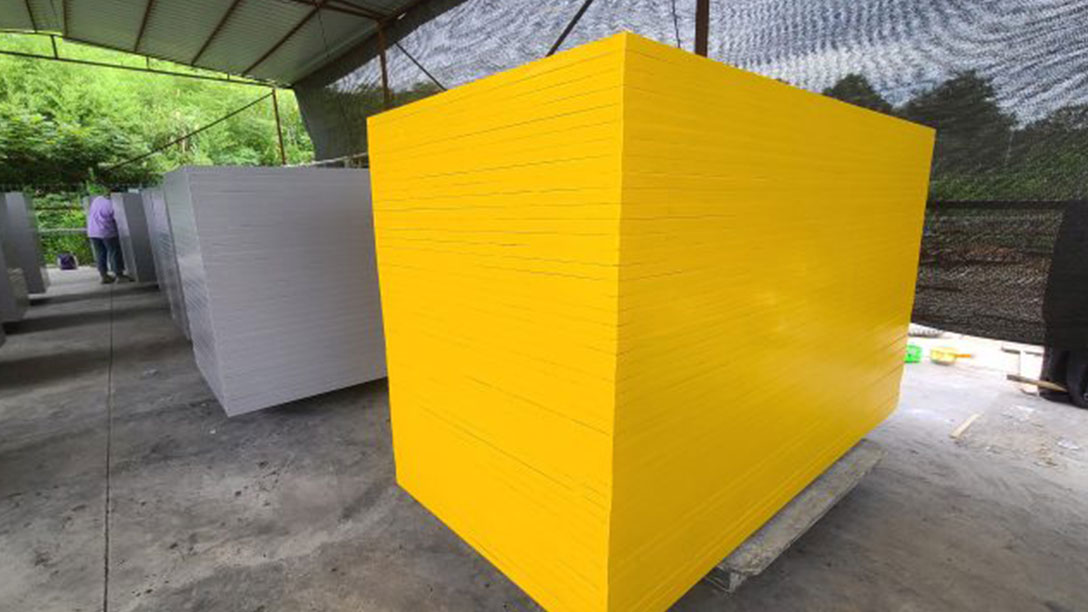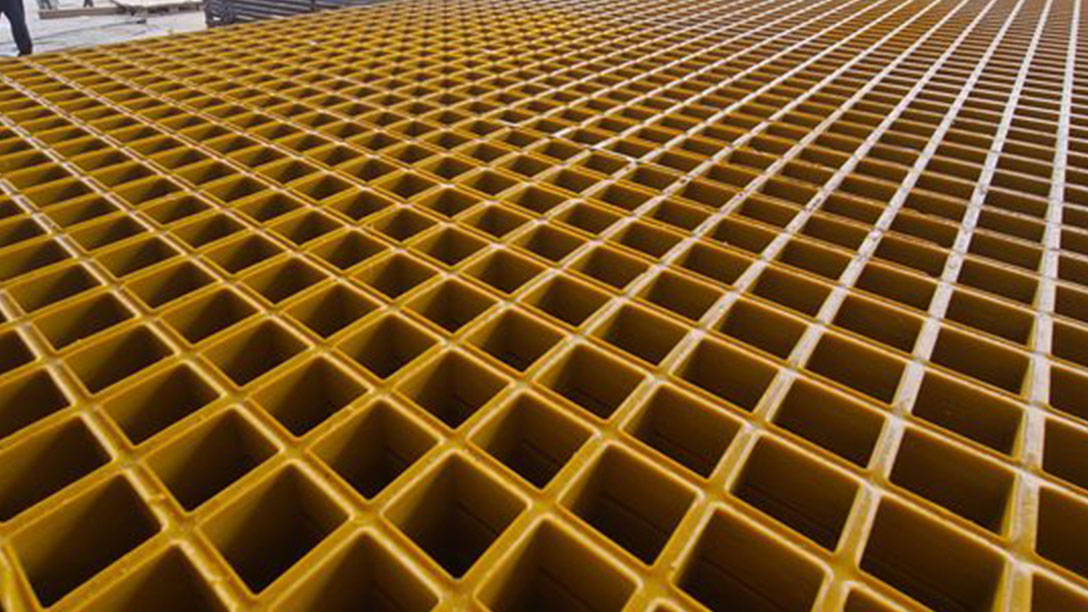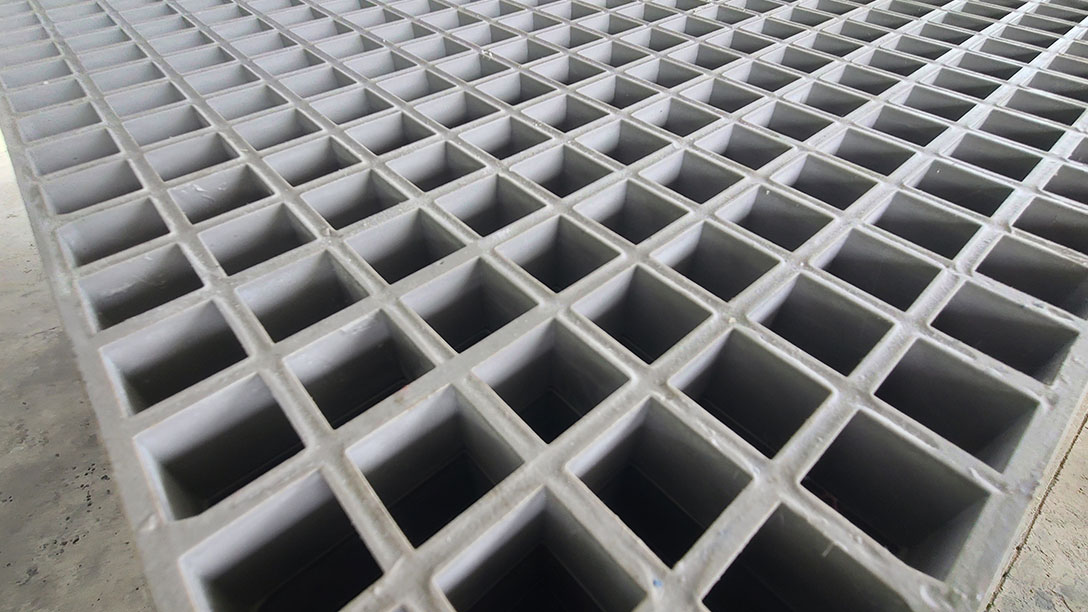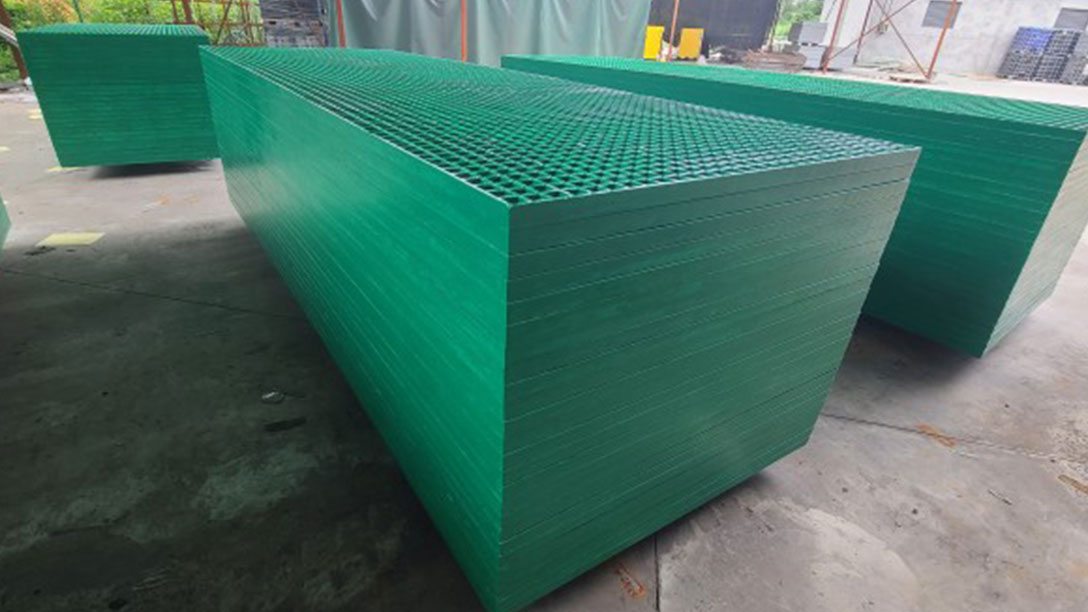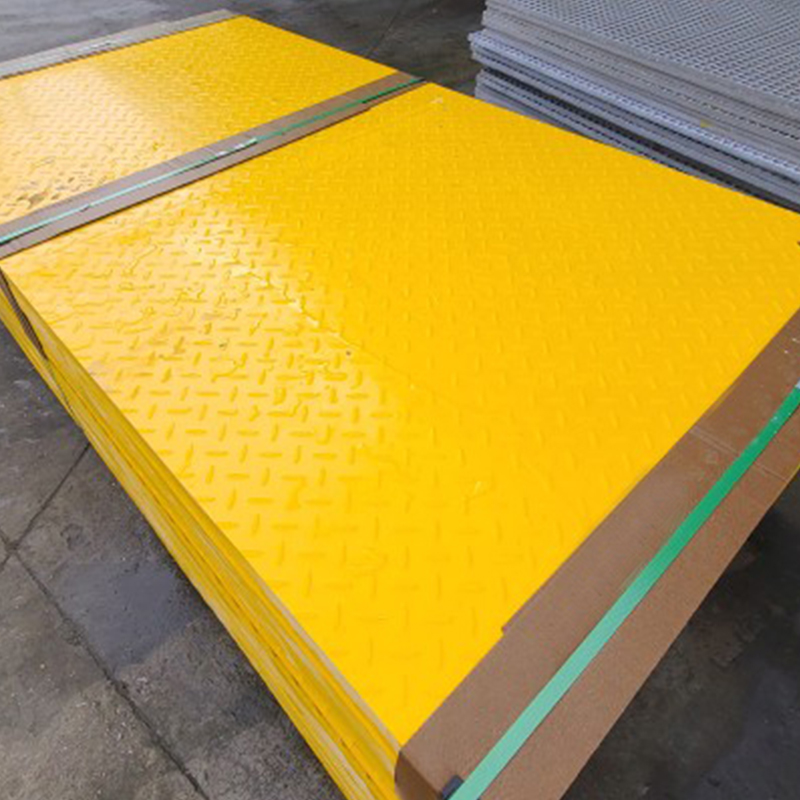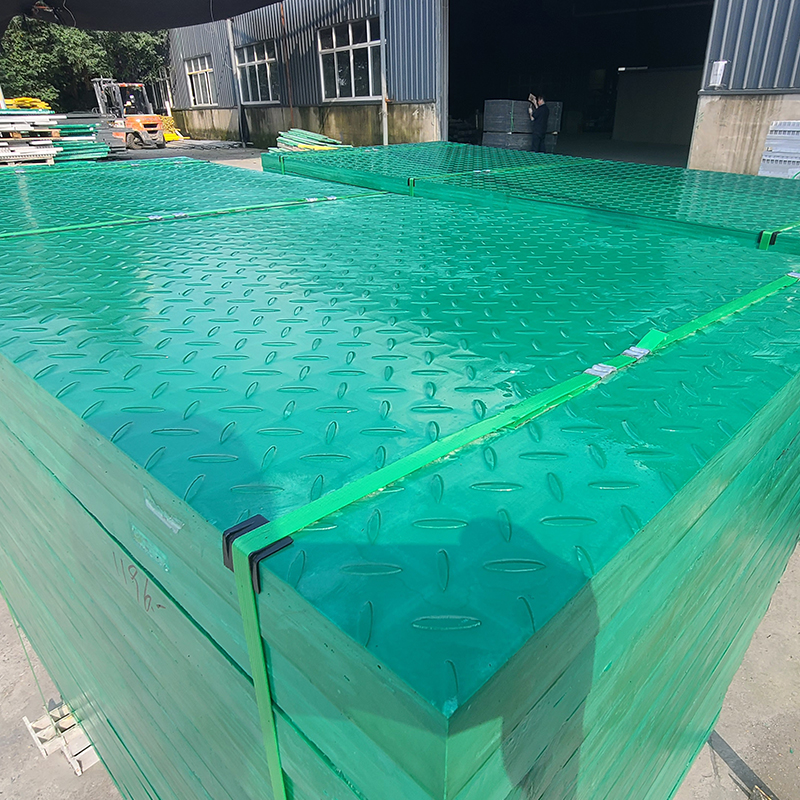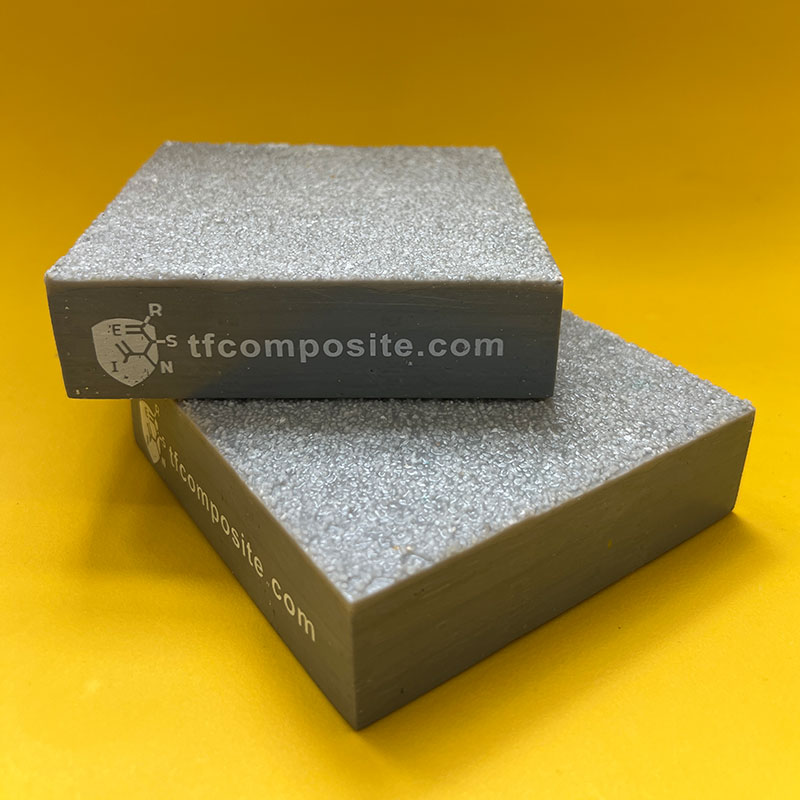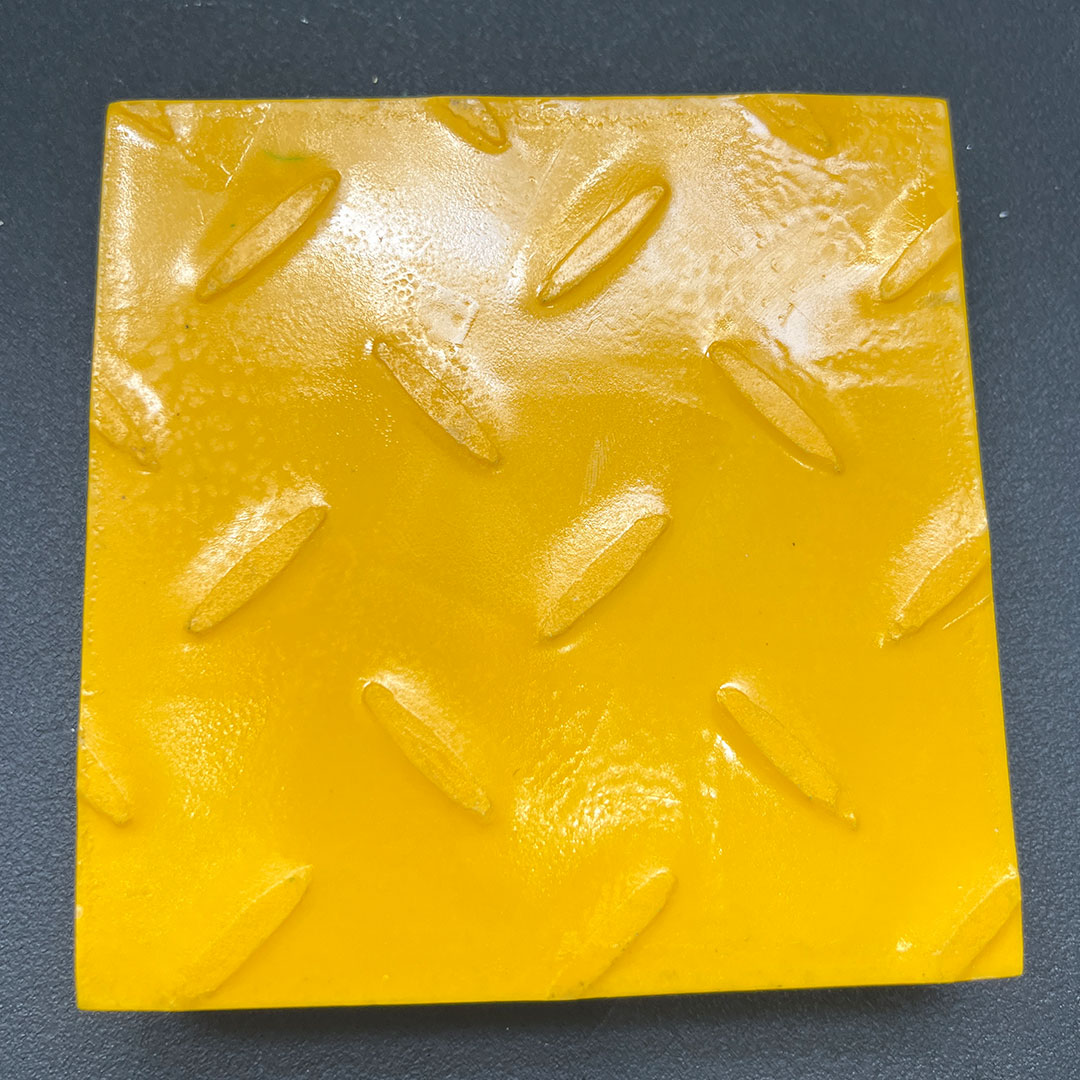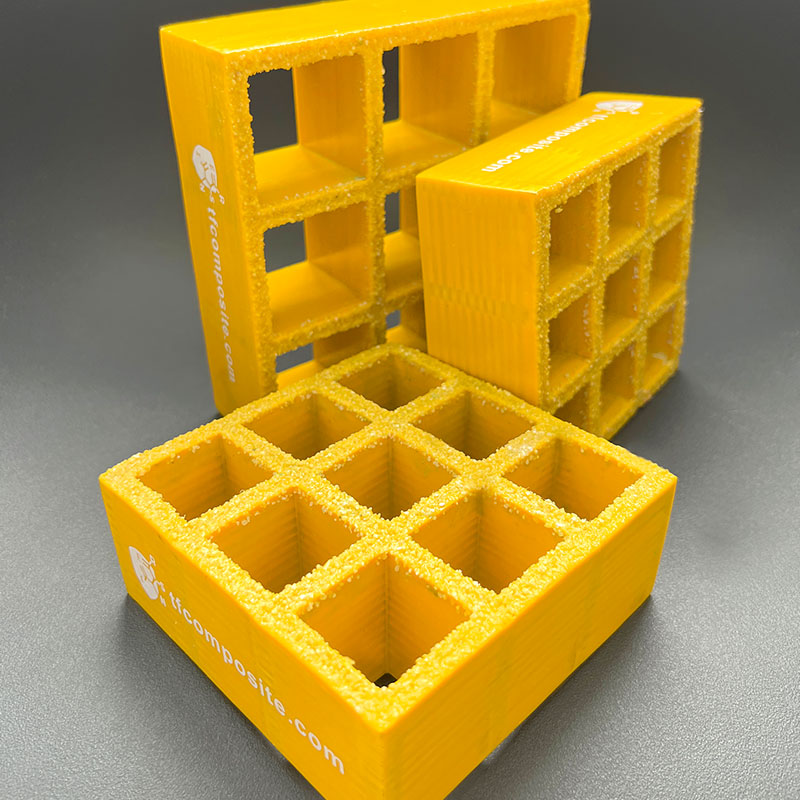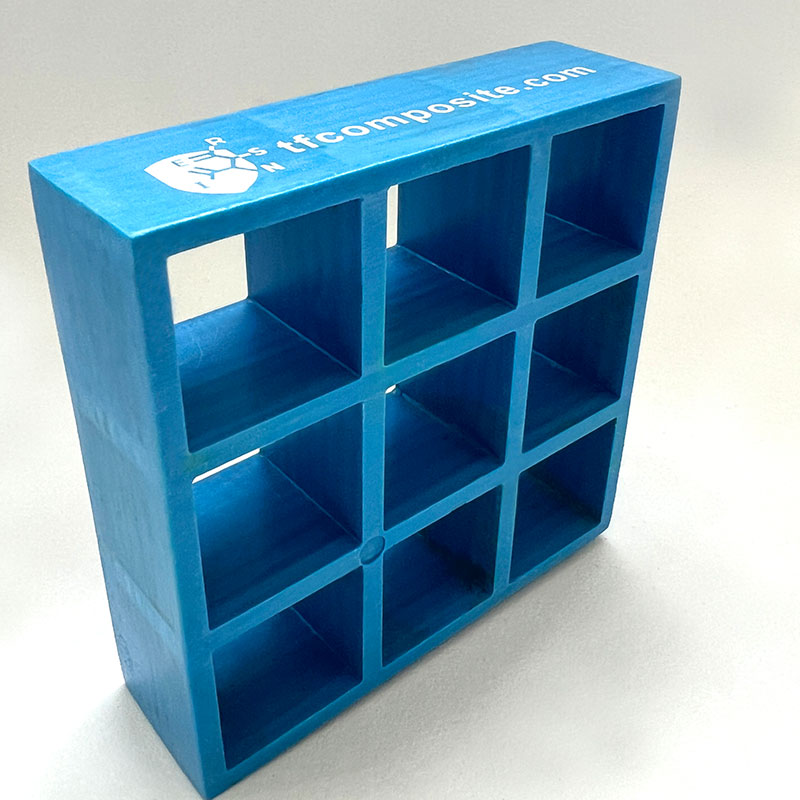Product performance introduction
FRP (Fiber Reinforced Plastic) grating is a lightweight, durable, and corrosion-resistant alternative to traditional materials like steel and aluminum. It is widely used in a variety of industrial, commercial, and residential applications due to its strength, non-slip properties, and low maintenance requirements. Here are some common applications of FRP grating:
1. Industrial and Chemical Plants
- Corrosive Environments: FRP grating is often used in chemical processing plants, oil refineries, and other industrial facilities where exposure to chemicals, saltwater, or moisture can cause corrosion in traditional materials.
- Walkways and Platforms: Its non-slip surface makes it ideal for walkways and platforms, especially in areas where chemicals, oils, or moisture are present.
- Maintenance Access: FRP grating is used for access platforms and maintenance walkways in areas where equipment needs to be serviced frequently.

2. Marine and Offshore
- Docks and Piers: It is commonly used on docks, piers, and marinas because of its high resistance to saltwater and marine environments.
- Ship Decks and Offshore Platforms: FRP grating is used on ships and offshore oil platforms to provide lightweight, strong, and non-corrosive flooring.
3. Wastewater Treatment Plants
- Corrosion-Resistant Flooring: FRP grating is used in wastewater treatment facilities where exposure to moisture, chemicals, and gases can cause metal to corrode.
- Drainage Systems: Its open design allows liquids to pass through, making it suitable for areas with high water flow or drainage requirements.
4. Food and Beverage Processing
- Hygienic Environments: FRP grating is easy to clean and resistant to bacterial growth, making it a good choice for food and beverage processing plants where hygiene is a priority.
- Non-Slip Flooring: The non-slip surface helps maintain safety in areas prone to spills and moisture.
5. Public Infrastructure
- Pedestrian Bridges and Walkways: Its lightweight nature and durability make it suitable for pedestrian bridges and public walkways in parks or recreational areas.
- Manhole Covers and Drainage Grates: FRP grating can be used for drainage grates, manhole covers, and trench covers in urban environments due to its resistance to corrosion and ease of installation.
6. Power Generation
- Power Plants: FRP grating is used in nuclear, thermal, and hydroelectric power plants for access platforms, walkways, and other areas exposed to harsh chemicals, high temperatures, and moisture.
- Transformer and Substation Flooring: It provides non-conductive flooring in electrical substations and other high-voltage areas.
7. Mining Industry
- Safety Platforms and Walkways: FRP grating is widely used in mining operations for safety platforms, walkways, and stair treads where corrosive materials and harsh conditions are common.
- Non-Slip Applications: Its slip resistance and durability make it ideal for wet or slippery areas common in mining environments.
8. Transportation
- Railway Platforms and Walkways: FRP grating is used in railways for access platforms and walkways around train stations and maintenance areas.
- Truck and Trailer Flooring: Its lightweight and high-strength properties make it ideal for use in truck beds, trailers, and other transportation applications.
9. Construction
- Scaffolding and Temporary Walkways: FRP grating is often used as scaffolding in construction due to its lightweight and easy installation.
- Drainage Covers: In construction sites, FRP grating is used to cover drainage systems, preventing debris from entering while allowing water to pass through.
10. Architectural and Landscaping
- Decking and Fencing: FRP grating is used in residential and commercial projects for decks, patios, and fencing due to its aesthetic appeal, corrosion resistance, and low maintenance.
- Greenhouses and Gardens: It can be used for elevated walkways or benches in greenhouses or gardens where moisture is prevalent.
Key Benefits of FRP Grating:
- Corrosion Resistance: Ideal for harsh environments where chemicals or moisture are present.
- Non-Conductive: Provides electrical insulation, making it suitable for electrical and high-voltage areas.
- Non-Slip: The surface texture helps prevent slips, ensuring safety in wet or oily conditions.
- Lightweight: Easier to install and handle compared to traditional materials.
- Low Maintenance: Does not require frequent maintenance or painting, reducing long-term costs.
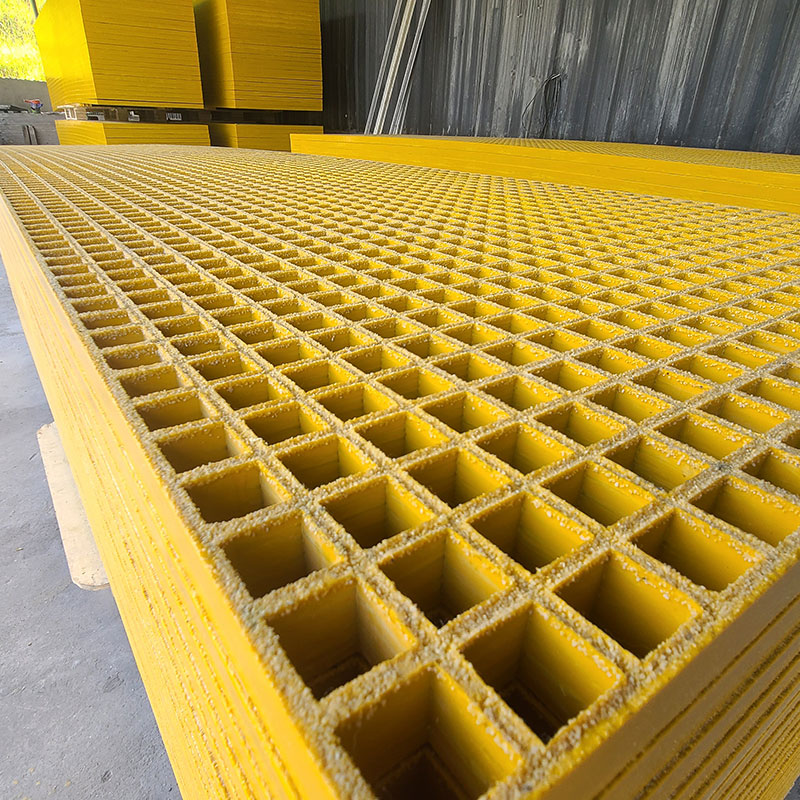
The product parameters for FRP grating include a range of characteristics like material composition, dimensions, mechanical properties, and surface finish. Below are the key parameters to consider when selecting FRP grating:
1. Material Composition
- Resin Types: The resin matrix used in FRP grating is a critical parameter for determining its performance in different environments.
- Polyester (Orthophthalic): General-purpose resin with moderate corrosion resistance, suitable for light industrial applications.
- Isophthalic Polyester: Offers higher corrosion resistance than orthophthalic polyester, suitable for mildly corrosive environments like food processing.
- Vinyl Ester: Excellent resistance to strong acids, alkalines, and solvents. Ideal for highly corrosive environments like chemical processing plants.
- Phenolic: Fire-resistant with low smoke emission. Used in areas requiring fire safety, such as offshore platforms or ship decks.
- Fiberglass Reinforcement: The fiberglass content provides strength to the grating. The percentage of fiberglass typically varies between 30% and 70%, depending on the desired strength and stiffness.
2. Panel Size
- Standard Sizes: Common panel sizes include:
- 1,220 mm x 3,660 mm (4 ft x 12 ft)
- 1,000 mm x 4,000 mm (custom panels are also available)
- Cut-to-Size: Panels can be cut into custom sizes to fit specific applications or spaces.
3. Thickness
- Typical Thicknesses: FRP grating is available in various thicknesses, commonly ranging from:
- 25 mm (1 inch)
- 30 mm (1.2 inches)
- 38 mm (1.5 inches)
- 50 mm (2 inches)
- 65 mm (2.5 inches)
- Thicker gratings are generally used for applications that require higher load-bearing capacity.
4. Mesh Size (Open Area)
- Standard Mesh: The most common mesh sizes include:
- 38 mm x 38 mm (1.5 inch x 1.5 inch) — typical for walkways and platforms.
- 50 mm x 50 mm (2 inch x 2 inch) — provides more open area for drainage or airflow.
- Mini-Mesh: Tighter mesh patterns like 19 mm x 19 mm (¾ inch x ¾ inch) provide a more comfortable walking surface and are often used in public or pedestrian areas.
5. Load Capacity and Deflection
- Load Rating: FRP grating load capacity is determined by factors like thickness, span, and resin composition. Typical values include:
- Standard Load: 500–1,000 kg/m² (about 100–200 lbs/ft²) for pedestrian traffic.
- Heavy-Duty Load: 1,500–2,500 kg/m² (about 300–500 lbs/ft²) for vehicular traffic or heavy equipment.
- Deflection: Grating is typically rated for maximum deflection at a given load, such as 1/200th of the span. This ensures that the grating remains safe and stable under load.
6. Surface Finish
- Concave Surface: Provides a non-slip surface and is the most common finish.
- Gritted Surface: Offers maximum slip resistance in areas prone to oil, grease, or moisture.
- Smooth Surface: Used in applications where ease of cleaning is a priority, such as food processing.
- Covered Surface: Some FRP grating comes with a solid top cover for applications requiring a fully closed surface to prevent debris from falling through.
7. Fire Retardancy
- Fire Rating: FRP grating can be manufactured to meet specific fire safety standards, such as ASTM E-84, Class 1 flame spread rating.
- Low Smoke Emission: Certain resins, like phenolic, are designed for environments requiring both fire resistance and low smoke emission, such as offshore platforms.
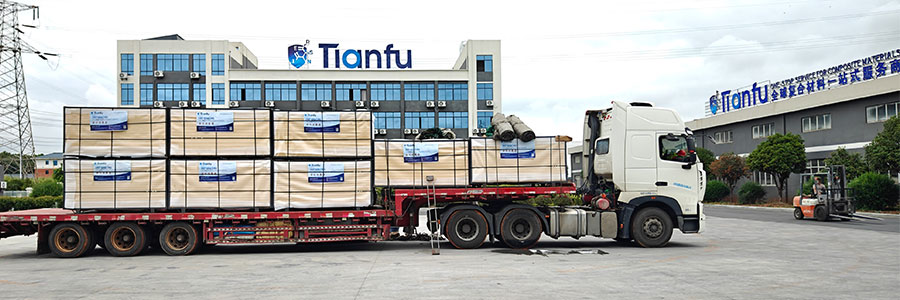
8. UV Resistance
- UV Protection: FRP grating is often treated with UV inhibitors to prevent degradation due to exposure to sunlight, making it suitable for outdoor applications.
9. Color Options
- Standard Colors: Typical colors include gray, yellow, green, and custom colors. The color is integrated into the resin, ensuring long-term color retention and UV stability.
- Yellow: Commonly used for high-visibility areas, such as safety walkways.
- Gray or Green: Often used in aesthetic applications, such as landscaping or pedestrian bridges.
- Custom Colors: FRP grating can be produced in specific colors for branding or aesthetic purposes.
10. Non-Conductive Properties
- FRP grating is non-conductive, making it ideal for use in electrical and high-voltage areas. Electrical insulation ratings vary by resin type, with phenolic grating offering excellent insulating properties.
11. Chemical Resistance
- Chemical Compatibility: FRP grating is resistant to a variety of chemicals, including acids, alkalis, and solvents. Specific resistance will vary based on the type of resin used.
- Vinyl Ester Resin: Superior resistance to a wide range of chemicals, especially strong acids and solvents.
- Isophthalic Polyester: Suitable for exposure to mild chemicals and environments.
12. Weight
- Weight per Square Meter (or Square Foot): Typically, FRP grating is much lighter than steel or aluminum grating.
- For example, 38 mm (1.5 inch) thick grating may weigh around 18–20 kg/m² (4 lbs/ft²).
13. Installation Method
- Fixing Clips: FRP grating can be fixed using various clips (M-clips, C-clips, L-clips) to secure it to the supporting structure.
- Fastening Type: Stainless steel or other corrosion-resistant materials are used for fasteners to ensure long-term performance in corrosive environments.
14. Compliance and Certifications
- FRP grating may need to comply with industry standards and certifications, depending on the application:
- ASTM D635: Test method for flammability of plastics.
- ASTM E-84: Surface burning characteristics of building materials.
- OSHA: Compliance for slip resistance, particularly for safety-critical walkways and platforms.
Tianfu Manufacturing Plants
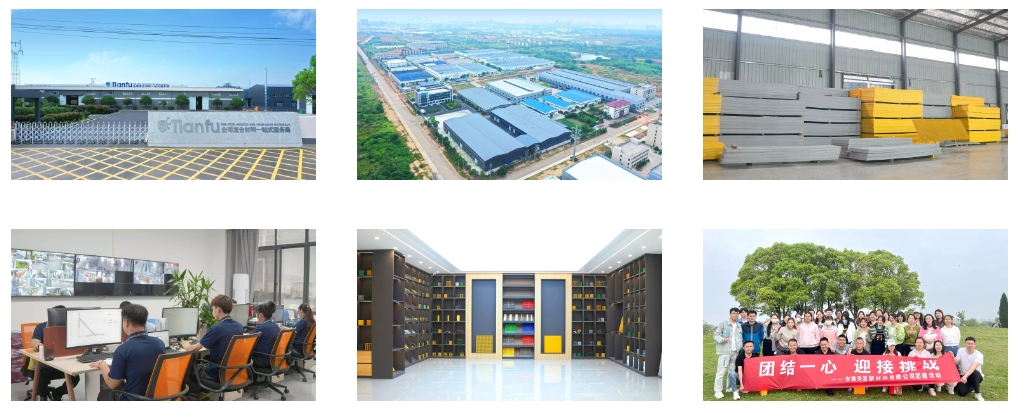
Exhibitions

Get A Quote
FRP Molded Grating
Series :
Fiberglass Molded Grating >application
FRP (Fiber Reinforced Plastic) grating is widely used in industrial, marine, and public infrastructure due to its corrosion resistance, lightweight nature, and non-slip surface. Common applications include walkways, platforms, and drainage covers in chemical plants, wastewater treatment facilities, and offshore structures. Its high strength-to-weight ratio makes it ideal for pedestrian bridges, docks, and ship decks, while its non-conductive properties make it suitable for electrical substations. FRP grating is also used in food processing plants for hygienic flooring. Its versatility, low maintenance, and durability in harsh environments make it a popular choice across various industries.
Brand name :
TFcomposite
Product Name :
FRP Grating
FAQ
Other related products

